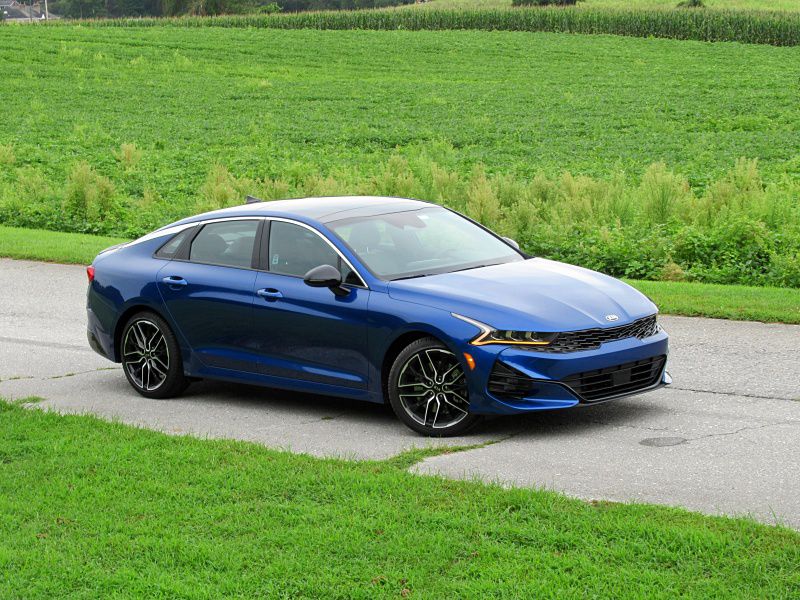Recent Articles
Popular Makes
Body Types
2022 Kia K5 vs. 2022 Hyundai Sonata
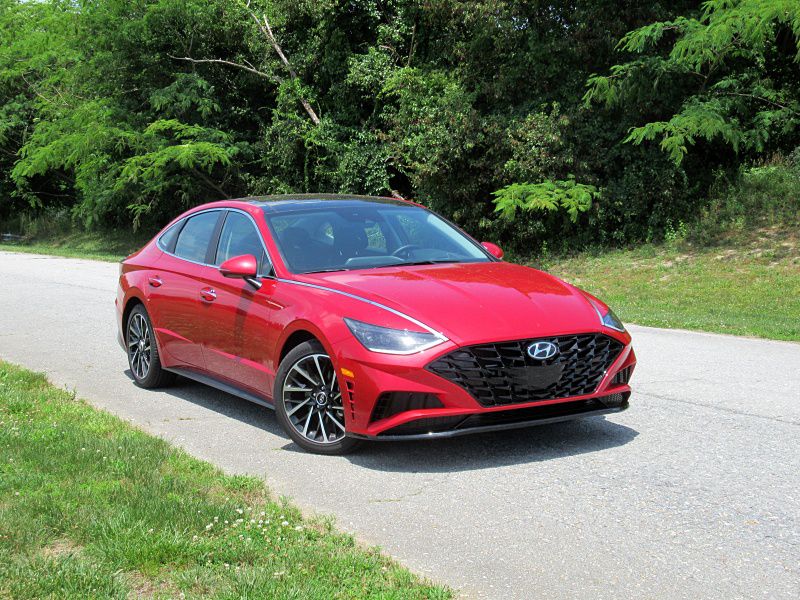
2021 Hyundai Sonata Limited ・ Photo by Brady Holt
The Hyundai Sonata used to be a simple, comfortable, and affordable mid-size sedan. But then came a complete redesign for the 2020 model year. It brought unique and voluptuous new styling, a high-tech and upscale interior, and sportier driving manners — all while keeping prices in check.
But the next year, along came a closely matched challenger: the all-new Kia K5. Replacing the Optima, it’s a mechanical cousin to the Sonata and has many of the same virtues: style, performance, and value. We’ve tested both the K5 and the Sonata so we can evaluate their respective pros and cons, name a winner in each of eight categories, and share our top overall pick between these two Korean mid-size sedans. (Our test vehicles were 2021 models, but their only changes for 2022 were adjustments to their equipment lists and, on the K5, switching to the brand’s redesigned logo.)
Pricing and Features
The 2022 Kia K5 starts at $23,690 for its base LX trim level, which undercuts the 2022 Hyundai Sonata SE’s $24,150. And the difference grows depending on the features you want.
For example, if you want blind-spot monitoring, you’ll pay an extra $1,800 on the Hyundai. A heated steering wheel and surround-view parking camera are a $2,000 difference. Upgrading past cloth seats costs $2,500 more in the Sonata. Kia provides a bigger infotainment screen and a navigation system for $5,000 less. And ventilated front seats arrive $5,500 sooner on the Kia. The Kia is also the only one of the two with optional all-wheel drive, and the K5’s biggest engine arrives for $31,090 compared with $33,450 on the Sonata. The Sonata has some advantages. It’s the only one to offer genuine leather upholstery, a blind-spot camera, or the ability to use your phone as a key. It comes standard with adaptive cruise control, which is an extra-cost option only on select K5 trim levels. And as we’ll discuss later, it’s the only one available as a hybrid. But for the most part, Kia delivers more for the money.
Kia K5
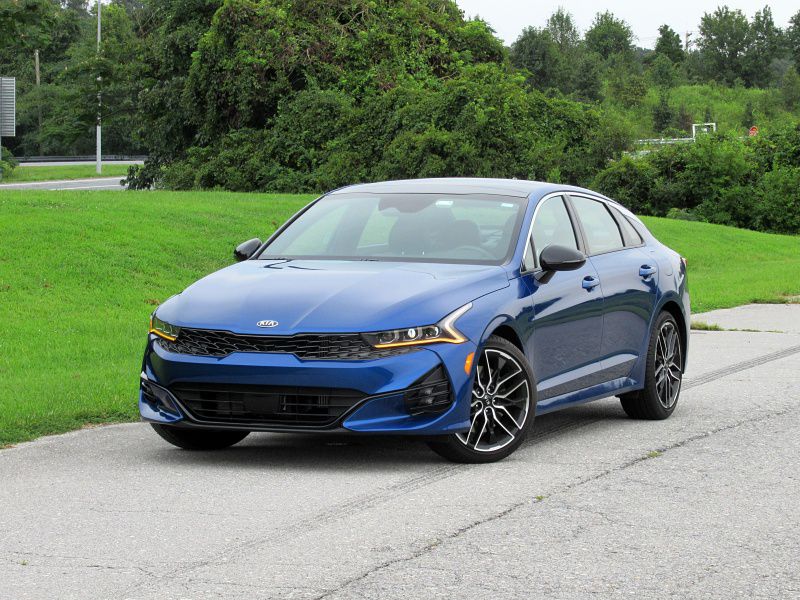
Photo by Brady Holt
Exterior Design
While they’re fundamentally the same under the skin, the K5 and Sonata wear entirely different skins. The Sonata’s is more graceful, with a flowing roofline and a more curved front end. Unique design cues include the angular taillights with a connecting lightbar, along with lighted spears that extend from the headlamps into a chrome bar alongside the hood. A wide, low body provides an assertive stance without an overbearing sportiness for drivers who don’t want that image.
The K5 has a sportier front end, with more aggressively pinched headlights and a narrower grille. And while the Sonata gets sharper edges around its rear end, that’s where the K5 softens up. The roof drifts back almost to the vehicle’s tail, accentuated with a chrome strip that drops down from the top of the side window to wrap around below the rear windshield. Black plastic trim between the chrome and the windshield glass makes the windshield look bigger than it is. Some folks will find both the Sonata and K5 designs to be too busy, but others will love the way they stand out from a crowd. Your winner between the two is a matter of personal taste.
Tie

Photo by Brady Holt
Interior Design
The Sonata and K5 both have contemporary, high-tech, and nicely finished interiors. The Sonata has smoother lines for a more luxurious look, while the K5 is blockier and angles its controls toward the driver for a sportier vibe. You’ll choose your preferred aesthetic, but we’re going to award this category to the K5 for a couple of reasons.
First, while both sedans have standard 8-inch infotainment touchscreens and available 10.3-inch screens, the bigger system is more widely available on the K5. It’s included on all but the two cheapest trim levels, while you have to pay north of $30,000 to get it on the Sonata. We like the bigger screen because it lets you see more information at once without switching views. What’s more, the Sonata’s 8-inch screen isn’t as cleanly integrated into the dashboard as its bigger unit; Hyundai’s stylists prioritized the 10.3-inch screen, while Kia’s made both screens fit nicely into the K5’s dashboard. There’s no loser between these two sedans, but the K5 comes out a bit ahead.
Kia K5
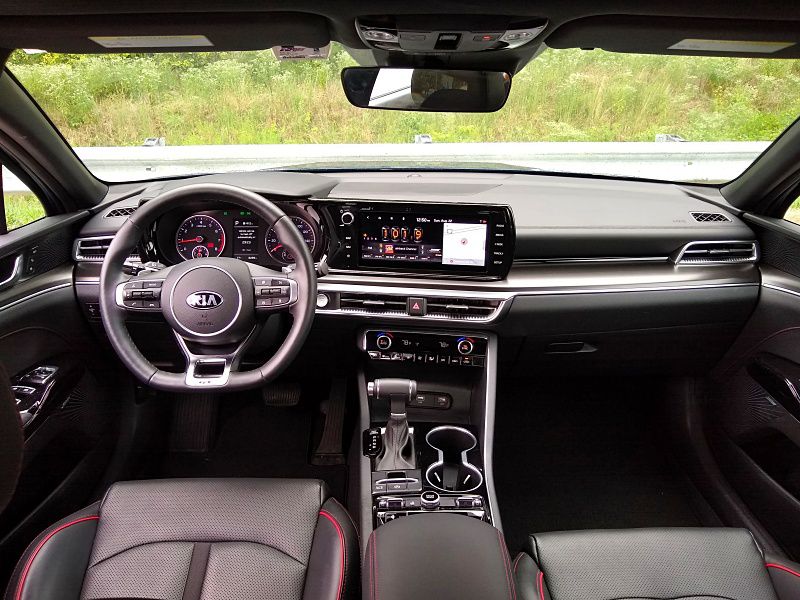
Photo by Brady Holt
Interior Space and Comfort
The K5 and Sonata offer nearly identical passenger accommodations: plenty of space, well-shaped seats, and a relatively low seating position for both front and rear passengers. Their trunk volumes are also identical at 16 cubic feet. A couple of minor factors tip our decision toward the Kia, though.
These cycle back to the features that we mentioned earlier. While features like heated front seats and a power driver’s seat arrive at the same price on both sedans, getting a heated steering wheel costs as little as $28,590 on the K5’s EX trim level compared with $34,100 on the Sonata Limited. Similarly, a heated steering wheel again requires the Sonata Limited, but it’s available as an option on the K5 EX for $32,190. These differences only apply to a few buyers, but as we look for differences between the two models, the Kia comes out slightly ahead.
Kia K5
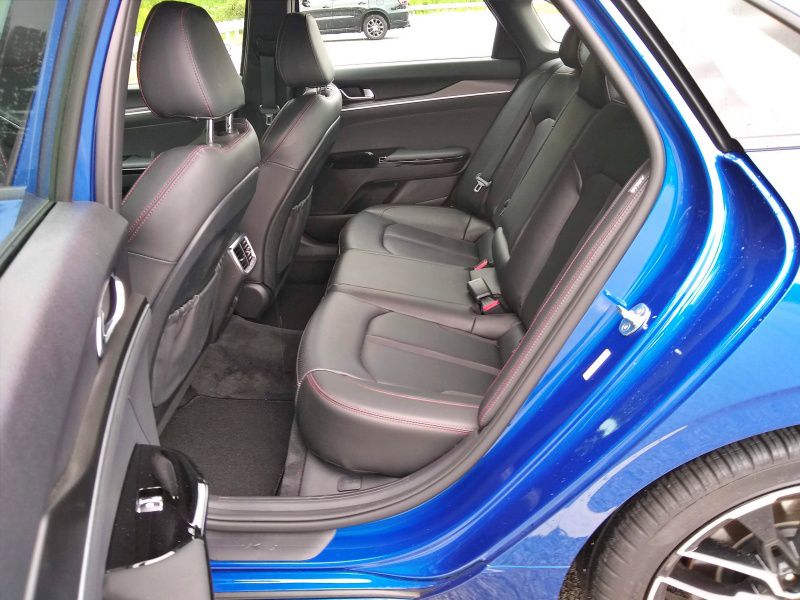
Photo by Brady Holt
Ride and Handling
The Sonata and K5 are both tuned to be sportier than the average family sedan, with firm rides and taut, responsive steering. But we came away slightly more impressed with the Kia.
Neither car is a true sports sedan, and you feel that when you take a corner at speed. Their handling limits reveal themselves earlier than a Honda Accord’s if you’re driving most K5 or Sonata models, and the steering goes numb even sooner. Still, we felt more connected to the road in the K5 without feeling a loss in the vehicle’s ride quality. And it’s the only one of the two with optional all-wheel drive, which improves traction in slippery conditions. In addition to both vehicles’ mainstream trim levels, we tested the K5 GT performance model, which is the equivalent to the Sonata N Line. Its sport suspension is stiffer and has less body roll than the ordinary models, but we still weren’t blown away; we’d expect the higher handling limits to show up more on a track than on the street.
Kia K5
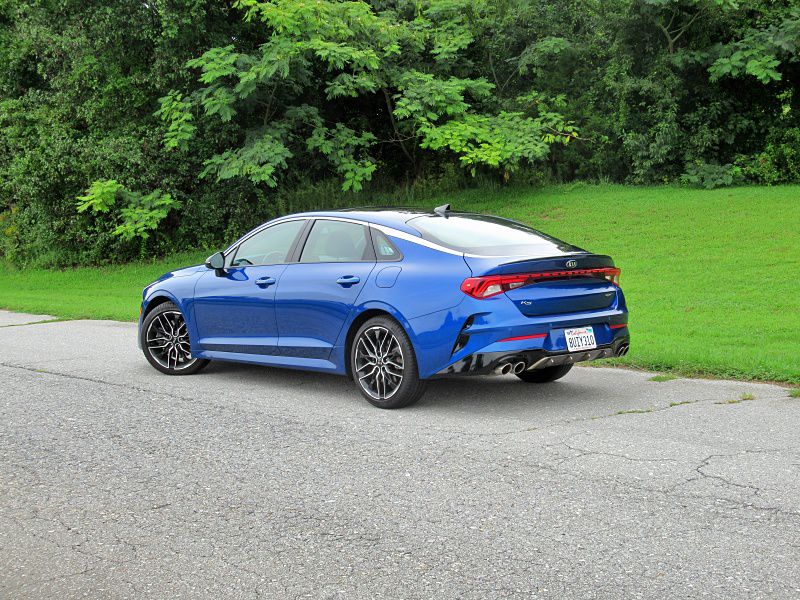
Photo by Brady Holt
Acceleration
The most popular Sonata trim levels use a 2.5-liter four-cylinder engine making 191 horsepower and 181 pound-feet of torque. That’s good power for the class, but it lacks the low-end shove of the available 1.6-liter turbo that comes with upper-trim models costing north of $30,000. This engine makes 180 horsepower and 195 pound-feet of torque, and it’s smoother and quieter. A neighbor asked us if it was an electric car as we glided past.
The K5 comes standard with this 1.6-liter engine, skipping the 2.5-liter model. That’s great news if you want this smooth, punchy engine without buying a lot of high-end features, and that’s why we award this category to the Kia. If you want thrills rather than mere everyday competence, the K5 GT and Sonata N Line upgrade to a big 2.5-liter turbo making 290 horsepower and 311 pound-feet of torque. In our K5 GT test vehicle, we found this engine lively when we pushed it yet agreeably mild-mannered when we weren’t trying to do anything crazy. (Sadly, this engine isn’t paired with the K5’s AWD system.) We expect the same from the Sonata N Line.
Kia K5
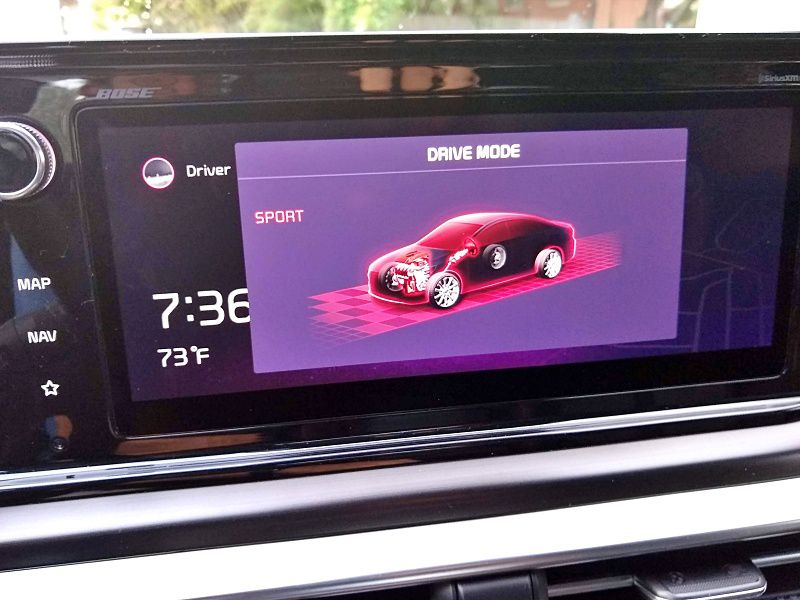
Photo by Brady Holt
Fuel Economy
The Sonata and K5 get nearly identical fuel economy — with one significant exception. The Sonata’s base engine gets the same EPA ratings as its 1.6-liter, the engine that’s standard on the K5. Each car gets 27 mpg in the city, 37 mpg on the highway, and 31 mpg combined on most of its 1.6-liter and (on the Sonata) 2.5-liter trim levels, while each sedan’s base model does about 1 mpg better. Both dip to 27 mpg combined with their turbocharged 2.5-liters.
But if fuel economy is your priority, the Sonata delivers mightily with its gas-electric Sonata Hybrid variant. Despite equivalent acceleration to the base model, its EPA ratings soar to as high as 50 mpg in the city and 54 mpg on the highway on the base model, and 45 mpg city and 51 mpg highway on the rest of the lineup. We did even better, averaging 53 mpg in a top-of-the-line Sonata Hybrid Limited. The hybrid costs about $2,000 more than a comparably equipped gas-only Sonata, but especially if you spend a lot of time in stop-and-go driving, it’s a worthwhile expense. There’s no equivalent K5 Hybrid.
Hyundai Sonata
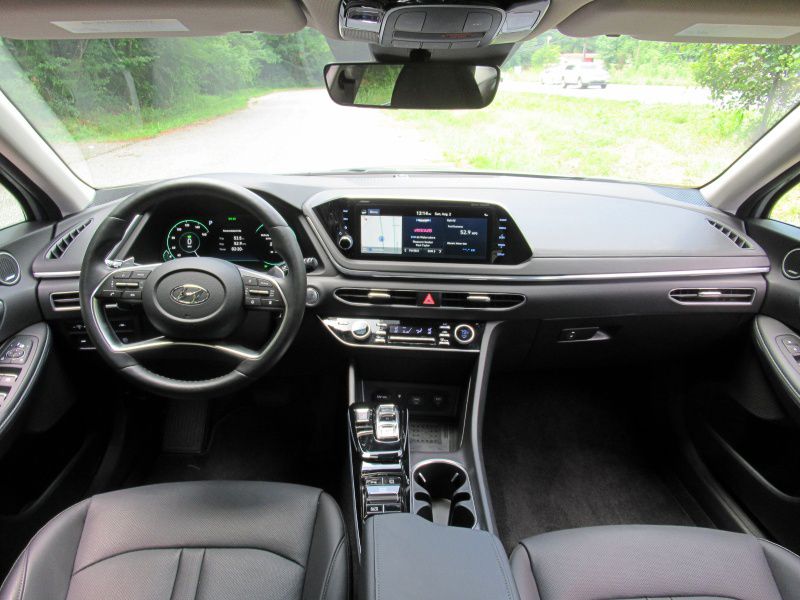
Photo by Brady Holt
Safety
Both the K5 and the Sonata have excellent safety ratings and a long list of standard safety equipment. But the Kia does just a bit better.
First, Kia scored a Top Safety Pick+ designation from the Insurance Institute for Highway Safety. That’s the group’s highest possible award, and better than the already excellent Top Safety Pick the Sonata achieved. The difference is that the K5’s base headlights offer superior illumination to the base Sonata’s. The Kia’s other safety advantages are that blind-spot monitoring and a rear cross-traffic alert are available for less money than Hyundai charges. Only the Sonata has a blind-spot camera, which shows a video in the gauge cluster when you activate the turn signal, but it’s restricted to the top Limited trim level anyway. Kia delivers more safety for the most popular trim levels.
Kia K5
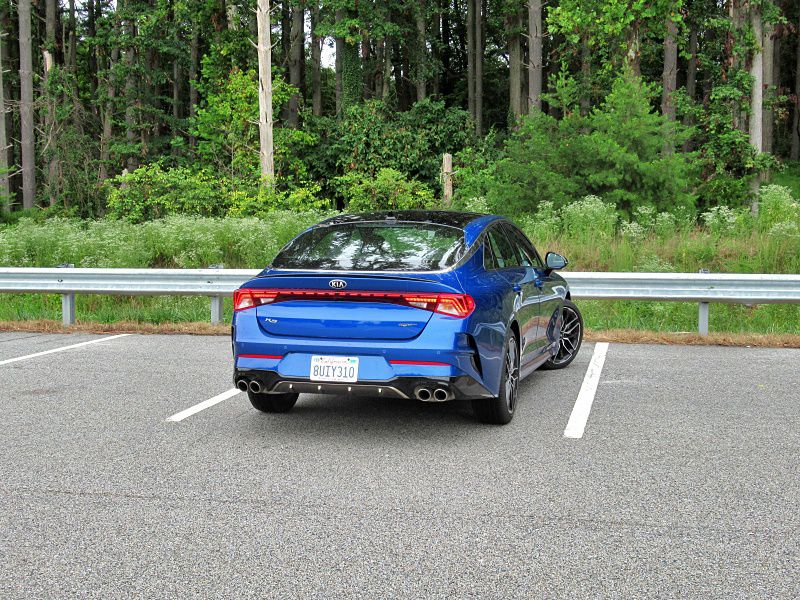
Photo by Brady Holt
Final Thoughts
The 2022 Hyundai Sonata is a fine mid-size sedan. It’s stylish without sacrificing comfort and spaciousness. It’s attractively priced without looking or feeling cheap. And it has a wide range of features across a broad lineup.
Still, the 2022 Kia K5 comes out ahead, albeit mainly by lots of small margins or in minor ways. We have slight preferences in how it handles and the design of its base-model dashboard. We appreciate its superior standard headlights and peppier, smoother base engine. We welcome its available all-wheel drive. Most of all, we love that it costs even less than an equivalently equipped Sonata in most cases. If you’re attached to the Sonata’s styling or something else about it, you’re not giving up a ton by choosing the Hyundai over the Kia. And we certainly wouldn’t argue if you picked the extra-efficient Sonata Hybrid. But otherwise, the K5 is our top choice between these two cousins.
Kia K5
